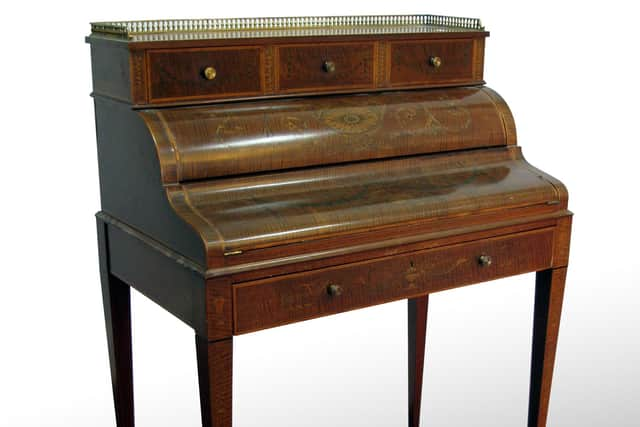Beautiful secretaire is a victim of technology says Sheffield antiques expert


A sad truth of modern life is that many eat their meals in the comfort of an armchair beside the television.
Therefore, demand for the dining table diminishes.
A similar fate affects the secretaire and the bureau.
In the age of emails and the internet, few people still need the writing surface or book storage that they provide any more.
Advertisement
Hide AdAdvertisement
Hide AdI fully appreciate that in the modern home a large piece of ‘brown’ furniture that serves no useful purpose will not be on many lists of intended purchases, but it just seems such a shame for the poor old secretaire.
What a wonderful piece of furniture it is.
During the 18th Century, the most fashionable item of writing furniture was the bureau, but the chest with a straight fronted writing drawer continued to be an alternative.
Two buttons at each side of the drawer dropped the front to reveal a writing interior every bit as exciting as that of the bureau.
The secretaire drawer gradually increased in depth and the chest was often surmounted by a bookcase.
Advertisement
Hide AdAdvertisement
Hide AdThe usefulness of the secretaire bookcase, or secretaire cabinet ensured that it continued to be made throughout the 19th Century, with infinite variations of detail in the style of pediments, glazing patterns and surface decoration.
The French developed the secretaire à battant in the late 18th Century and it is generally considered more sophisticated than the British version.
It was a full, flat, fall front cabinet, resting on a chest of drawers or cupboard, often constructed as one piece rather than two separate.
As with everything though, beauty is in the eye of the beholder.